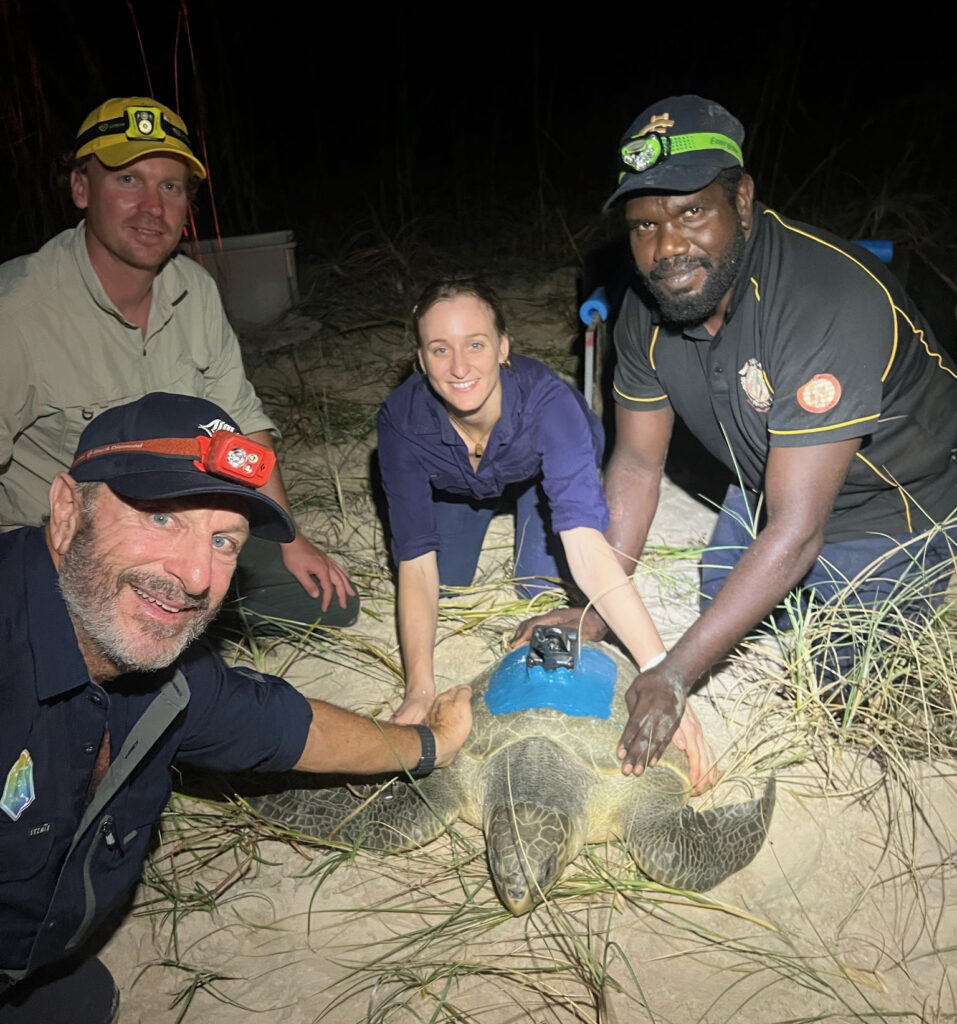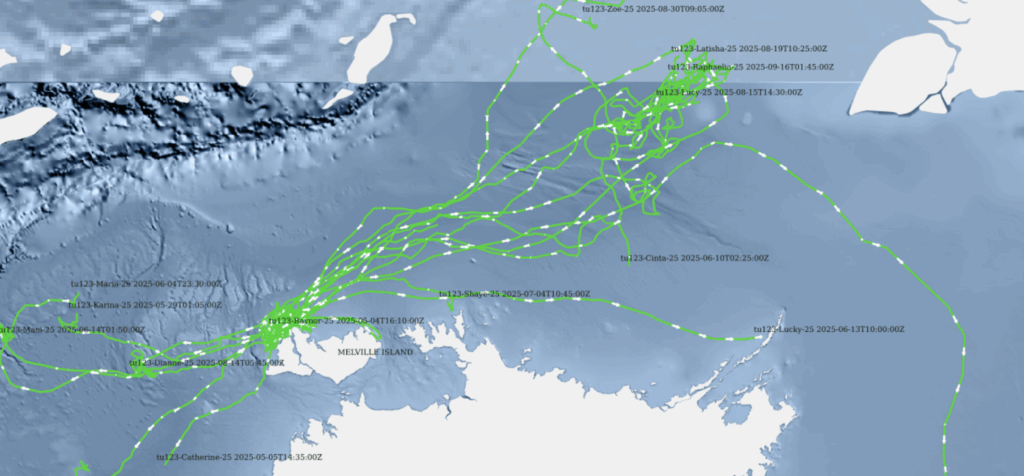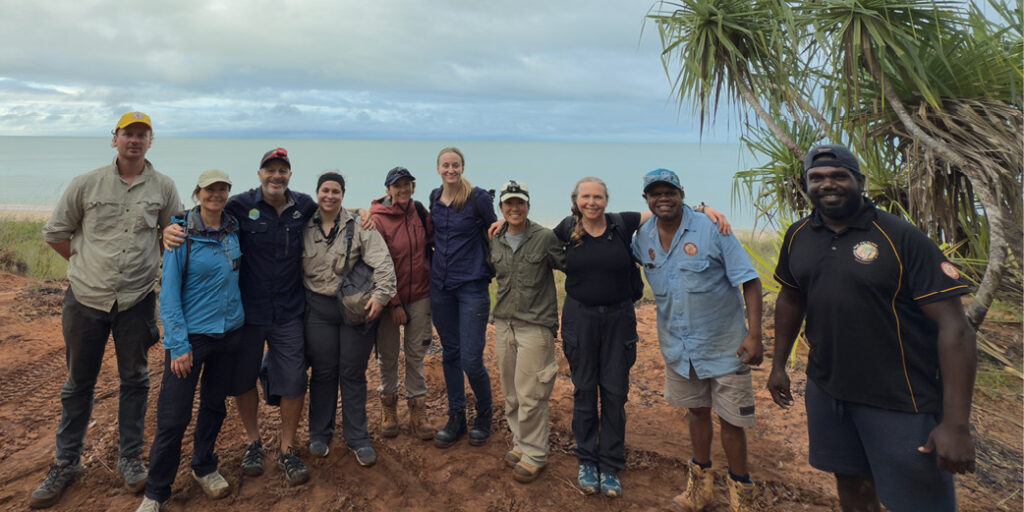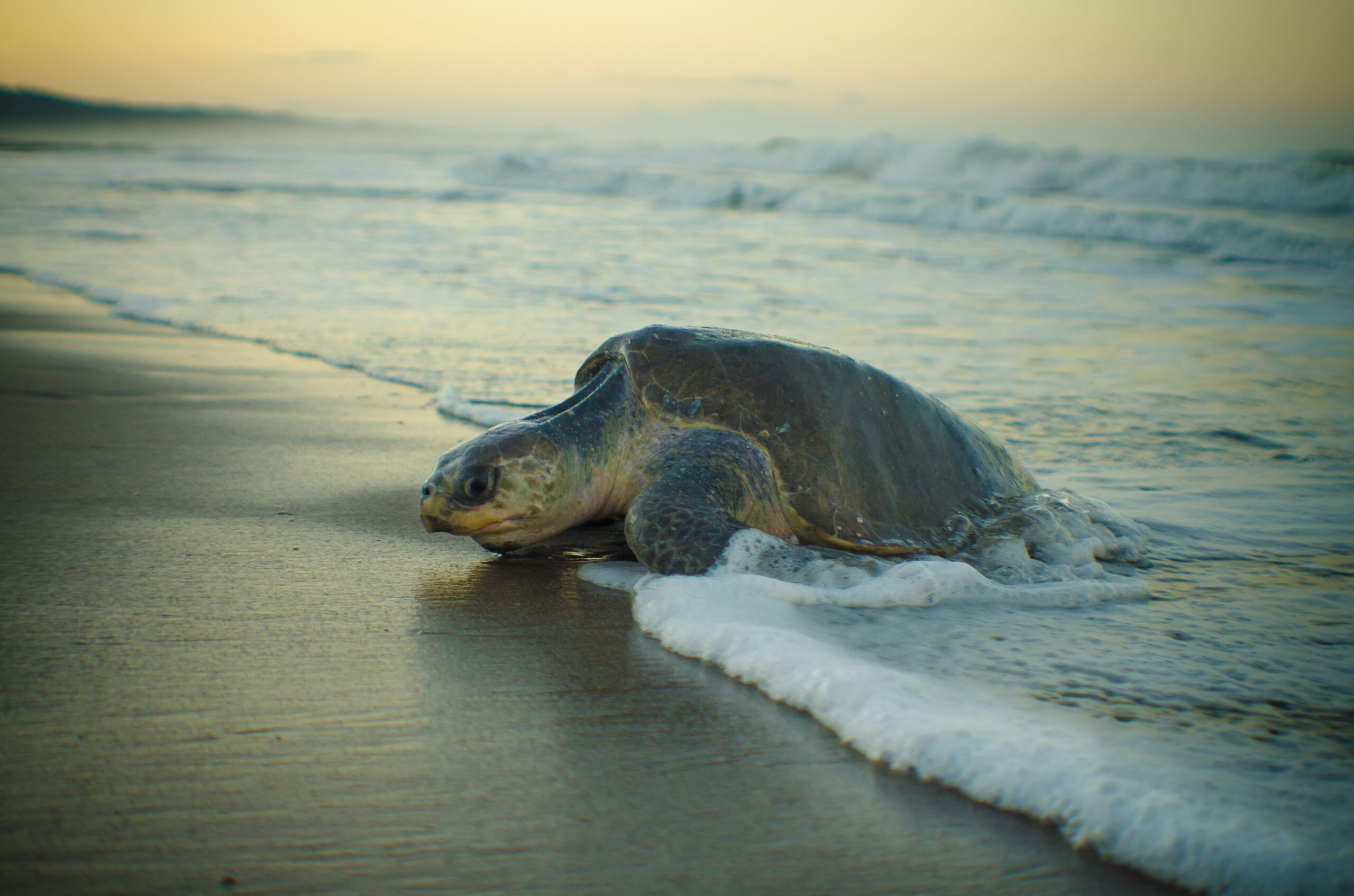IMOS is providing valuable oceanographic measurements in this poorly sampled region whilst simultaneously delivering information about turtle behaviour and movements by attaching satellite tags to turtles.
On a recent field trip satellite tags were attached to 20 olive ridley turtles during the nesting season at Imalu Beach on Melville Island, which is in the Tiwi Islands group. The turtle tagging is a collaboration between Tiwi Rangers, Tiwi Land Council, IMOS, the Australian Institute of Marine Science (AIMS) and the Sydney Institute of Marine Science.

Olive ridley turtles (Lepidochelys olivacea) are an endangered species that are distributed globally across the tropics. They are also culturally important to Traditional Owners of the Tiwi Islands in the Northern Territory. Their sea Country is recognised as one of the most important remaining nesting areas in Australia and the Pacific region.
AIMS senior research scientist Dr Michele Thums said, “Before the IMOS project there was very little known about the movement behaviour of olive ridley turtles in Australia. With these tracks we can map the area they use during the inter-nesting season, their migration pathways and uncover the areas they use for foraging which were previously unknown.”
Once satellite tagged, the turtles move off the beach and head into the ocean, providing data about their movements and dive behaviour in near real time. The turtle tracks can be viewed on the IMOS Australian Ocean Data Network Portal.

The names that can be seen on the map were given to the turtles by the Tiwi Rangers, who named them after their daughters and other female family members. For example, Rits the turtle, named after the Ranger Coordinator, headed off on her migration (to foraging grounds) around 2 weeks after tagging and is now down in the Gulf of Carpentaria. Another big mover, Letaya has headed north through the Arafura Sea to her foraging ground along the coast of Papua New Guinea.
“These olive ridley turtles dive to the sea floor and then surface to breathe providing valuable profiles of the water column from the bottom to the surface. This enables us to collect critical information that will greatly improve our understanding of large scale oceanographic processes in this poorly sampled region, and even help improve our ability to measure the strength and trajectories of important events like tropical cyclones.
This information along with improved biological data is a wonderful enhancement to our collaboration with Traditional Owners and their wealth of understanding of the ecology of these beautiful animals.”
Emeritus Professor Rob Harcourt, Facility Leader for the IMOS Animal Tracking Facility.

These newly tagged turtles will add to the information IMOS has gathered in the past in a previous collaborative satellite tagging project in 2022 and 2023. “Beyond the science, this project also highlights the value of two-way learning with Traditional Owners of sea Country and continues to build the capacity of researchers in respectful collaboration”, said Tonya Grant, IMOS Indigenous Partnerships Coordinator.
“Since we started working on the satellite tracking with IMOS we have learnt about how far the olive ridley turtles travel and their foraging behaviour. The tracking is giving me more information to pass on to my people and the Land Council.”
James Desantis, Tiwi Ranger Supervisor, Tiwi Rangers.
Ultimately, the essential behavioural observations IMOS is collecting will result in improved animal behaviour and habitat use models that will allow us to quantify which areas are important, and with Traditional Owners and management agencies refine the designation and protection of areas critical for the turtles nesting and feeding. This is exactly the kind of information needed to support the development of better conservation and improved management policy for this iconic, culturally important and endangered species that we currently know so little about.
